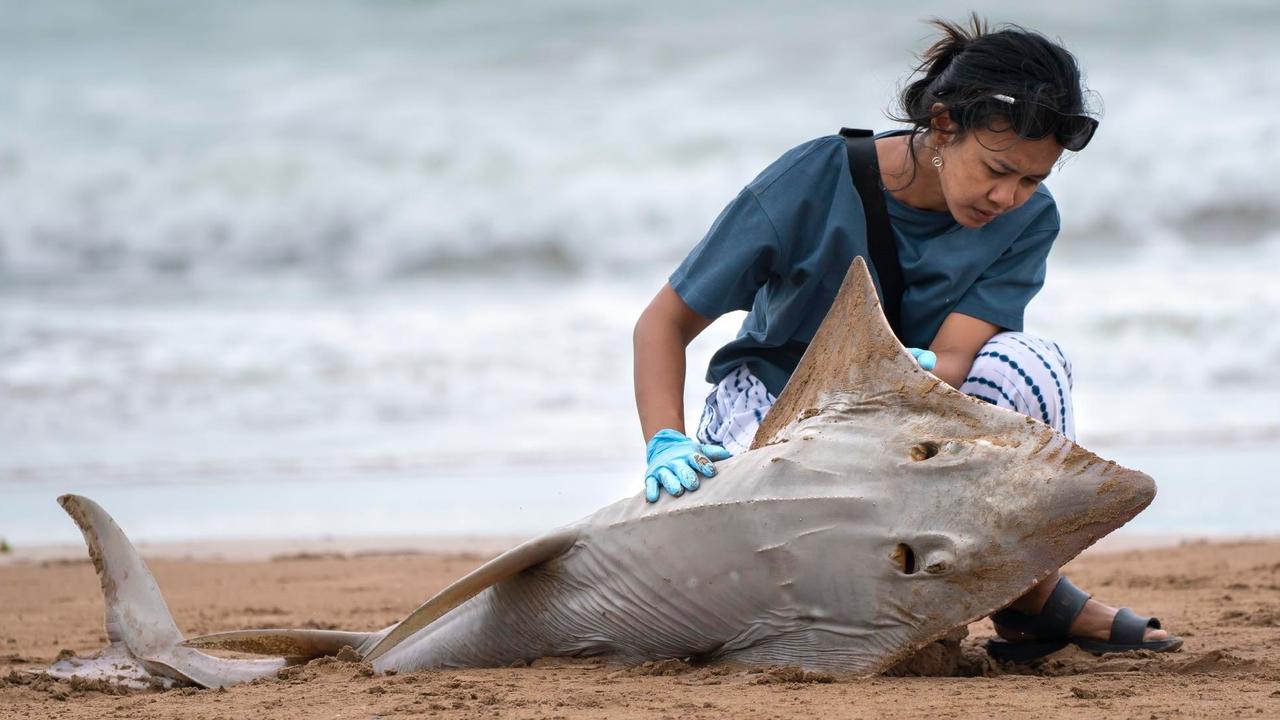Rarely seen Bottlenose Wedgefish washes up on Casuarina Beach
A bottom dweller that usually lives more than 60m below the surface washed up on Casuarina Beach, offering researchers a rare chance to study the critically endangered creature.

News
Don't miss out on the headlines from News. Followed categories will be added to My News.
A rare sea creature that usually lives more than 60m below the ocean’s surface has washed up on a Top End beach.
The Bottlenose Wedgefish was discovered without any sign of injury stranded on Casuarina Beach by a member of the public walking their dog earlier this year.

They posted in the NT Field Naturalists’ Club Facebook group asking for help to identify the fish, and caught the attention of researchers.
Charles Darwin University marine researcher Benaya Simeon quickly identified the 1.8m long, spotted creature as a Bottlenose Wedgefish – a critically endangered bottom-dweller that occurs in tropical and subtropical waters across northern Australia.
On Facebook, Ms Simeon said it was a mature female, and would be “really stinky” when it decomposed further due to the ammonia in the carcass.

The Museum and Art Gallery of the Northern Territory is staving off the decomposition while it figures out how best to keep the Bottlenose Wedgefish for future research.
“We’ve got it in the freezer at the moment,” head of science at MAGNT Kirsti Abbott said.
“We’re working out what the best bang for buck will be – it may be keeping it whole in the tank for research, or it may mean macerating it.
“Smaller ones are washed up infrequently around the Top End, but something this big and in such good condition is really quite rare to come across.”
Dr Abbott said the find would help all types of future research into cartilaginous fishes, including conservation, population dynamics, movement and behaviour.
“This fish is internationally recognised as threatened, and we have a responsibility now to keep this data in perpetuity,” she said.
“It shows how museums and scientists around the world are relying on citizen scientists to help find and identify rare specimens.”

The NT Environment Department said the tissue sample would be used to “deepen understanding of the species’ genetic makeup and population diversity”.
“They don’t often wash up on beaches, making sightings extremely rare,” it said.
“The stranding quickly caught the interest of wildlife enthusiasts, and a team of specialists from the Museum and Art Gallery NT responded promptly to assess the situation.
“The team collected essential data, including taking a tissue sample for the museum’s collection.”
More Coverage
Originally published as Rarely seen Bottlenose Wedgefish washes up on Casuarina Beach









